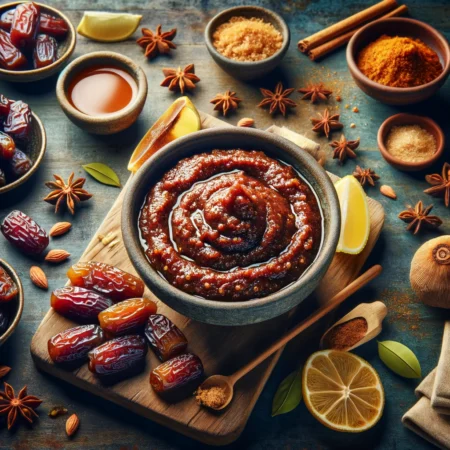Winding alleys, grand bazaars, a confluence of continents: welcome to Turkey. A mosaic of cultures, where the calls of minarets intertwine with the scent of spices. Among its many tales, there’s one that lingers in every kitchen and dances on every palate – the story of Turkish Baharat.
Let me take you back, beyond the sprawling cityscape of Istanbul, to a time when caravans traced the Silk Road and Anatolia was a hub of the world. At its heart was Cemal, a spice merchant with dreams bigger than the Hagia Sophia and a heart as fiery as Anatolian chilies.
One evening, as the sun cast golden hues over Cappadocia’s fairy chimneys, Cemal found himself pondering. The region, a crossroads of empires, beckoned a blend that would echo its soul – a symphony of flavors that spoke of Turkish passion, warmth, and diversity.
The quest began in the bustling bazaars of Bursa. Cumin for its warmth, echoing the Turkish hearth. Paprika for its heat, reminiscent of the Anatolian sun. Cloves, as mysterious as Turkish tales; and nutmeg, hinting at nights filled with Sufi whirls under starry skies. Each spice, chosen not just for its flavor, but for the tale it told.
As Cemal mixed them, something magical happened. The blend wasn’t just aromatic; it sang songs of the Bosphorus, of dervishes and sultans, of the snow-clad Taurus mountains and the sun-kissed Aegean shores. The Turkish Baharat was born.
It didn’t take long for word to spread. From the palatial feasts in Topkapi Palace to the humble homes in Anatolian villages, Baharat became the heart of Turkish cuisine. It found its way into kebabs grilled over open flames, lent depth to mezes shared over Raki, and added warmth to stews that comforted during chilly Eastern nights.
The Ottoman Empire might have seen its zenith and decline, but Baharat’s allure never waned. It transcended eras, becoming a thread that wove through Turkish history, binding generations.
Modern Turkey, with its blend of tradition and avant-garde, saw Baharat not just as a culinary staple but as an emblem of its spirit. Chefs, from Izmir to Antakya, began experimenting, giving this age-old blend of contemporary twists, yet always ensuring its soul remained untouched.
Today, as you wander the streets of Istanbul, where Europe meets Asia, the scent of Baharat is unmistakable. From smoky grills by the Galata Bridge to chic restaurants in Bebek, its aroma is a constant, a testament to Turkey’s unwavering love for flavors that tell tales.
So, when you find yourself amidst Turkey’s landscapes, be it gazing at Pamukkale’s terraces or exploring Ephesus’s ruins, remember to seek out this legendary blend. Let Baharat take you on a journey, where every bite is a foray into Turkey’s heart, into its tales of passion, warmth, and heritage.
Bush Spice Blend: Australia's Culinary Dreamtime
Experience the unique flavors of the Australian outback with this aromatic and earthy spice blend, which combines traditional bush ingredients with more familiar seasonings.
Ingredients
- 2 tablespoons ground wattleseed
- 2 tablespoons ground macadamia nuts
- 2 tablespoons dried and ground lemon myrtle leaves
- 1 tablespoon ground mountain pepperberries or black pepper
- 1 tablespoon ground bush tomato
- 1 tablespoon ground aniseed myrtle or regular aniseed
- 2 teaspoons sea salt flakes
- 1 teaspoon dried and ground finger lime
Directions
- In a dry skillet, toast the ground wattleseed and macadamia nuts over medium heat for 2-3 minutes or until fragrant. Stir occasionally to prevent burning.
- Remove from heat and transfer to a mixing bowl.
- Add the lemon myrtle, mountain pepperberries or black pepper, bush tomato, aniseed myrtle or regular aniseed, sea salt flakes, and finger lime to the bowl.
- Mix all the ingredients thoroughly until well combined.
- Store the bush spice blend in an airtight container in a cool, dark place.
- Use this spice blend as a seasoning for meats, in marinades, or to add a unique Australian flavor to your dishes.
Tips & Tricks: This blend is versatile and can be adapted based on available ingredients. While some ingredients may be hard to find outside of Australia, many specialty stores or online retailers offer them. The blend’s earthy and citrusy tones can elevate dishes like grilled meats, seafood, and even vegetable dishes. Don’t be afraid to experiment and adjust the quantities to suit your personal preferences.





